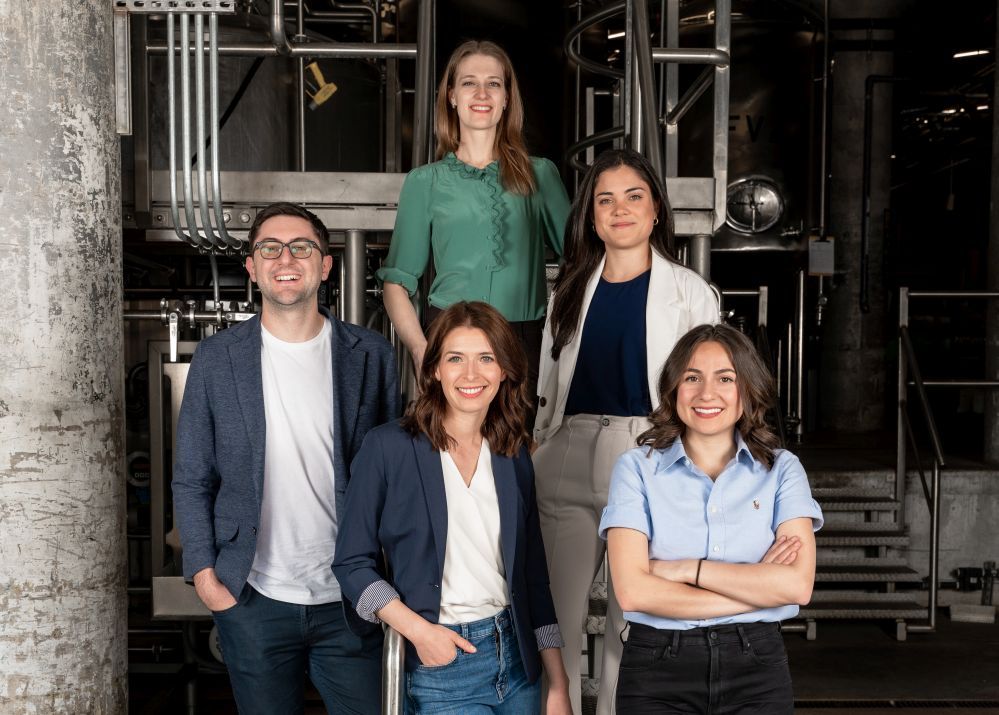- Hyfé, a Chicago-based startup transforming food processing wastewater into feedstocks for biomanufacturing and clean water, has raised a $9 million seed round led by Synthesis Capital.
- The round, which was also backed by The Engine, Refactor Capital, Supply Change Capital, Overwater Ventures, X Factor Ventures and Alumni Ventures, takes Hyfé’s cumulative funding to $11 million.
- The capital will be used to advance commercial partnerships, increase headcount, and progress towards pilot scale technology demonstration.
Why it matters
Microbial fermentation is now used to produce everything from enzymes to high-intensity sweeteners. But if the bioeconomy is really going to take off, says Hyfé co-founder Michelle Ruiz, we must pay more attention to the feedstocks fueling this trend.
“It is critical for the feedstocks that will power that growth to come from underutilized waste carbon streams that are cost effective, non-competitive with food, and avoid disruption of agricultural systems.”
Right now, says Ruiz, a former ExxonMobil chemical engineer, firms are typically feeding their microbes purified sugars such as dextrose from food crops such as corn, which come with their own environmental and economic costs.
“Cost and supply of sugar feedstocks used to power bioprocesses is a major obstacle towards achieving price parity and the glucose needs of the bioeconomy are forecasted to outpace supply over the next 10-20 years.”
The race to find cheaper, more sustainable feedstocks for fermentation
As a result, she says, the race is on to find a cheaper and more sustainable approach, from valorizing industrial and agricultural waste streams; to extracting cellulosic sugars from non-food crops; to finding microbes that can sidestep sugars altogether and convert carbon in air into protein instead.
But one source of sugars that no one has effectively valorized, yet, is the sugary wastewater from food manufacturing facilities, from breweries to canning factories, says Ruiz, who teamed up with LanzaTech biochemist and patent agent Andrea Schoen in 2021 to form Hyfé.
Ruiz, who used to run a wastewater treatment plant using microbes to eat organic matter, says brewers, corn millers and other food manufacturers are currently paying surcharges to treat millions of gallons of sugary wastewater every year. With some pre-treatment steps, this could be utilized to feed microbial fermentation facilities, she says.
“Biomanufacturing has the potential to solve some of the most pressing challenges facing humanity, but first it needs to be made economically viable. We are building a solution that addresses a fundamental bottleneck for the bioeconomy just as it’s reaching an inflection point.”
Strategic pivot
The original plan for Hyfé was to make a high-protein flour from fungi that fed on sugary wastewater, Ruiz told AgFunder News (AFN), but gradually realized that it made more sense to focus on its core competence in waste water treatment.
“An in-depth technoeconomic [analysis] told us we would have a dramatically more transformative impact in this space if we leveraged our decades of experience in wastewater treatment, chemical engineering, and biotech IP to solve a problem no one else was working on: making low cost alternative feedstocks from wastewater. And by the way, we capture this water while it’s still in the process before it becomes wastewater.
“Our plan now is to sell alternative feedstocks to biomanufacturers across the spectrum of fuels, food, materials, and chemicals so that we can help them get closer to price parity, and by way of that, unlock the potential of biomanufacturing to decarbonize large industrial sectors.”
How it works
So how does it work in practice?
According to Ruiz: “We take process water from food manufacturers through a co-located unit after it’s done being useful and before it becomes wastewater. We remove everything from the water, which we process through our platform, and return fresh water for reuse at the manufacturer’s site.
“There are financial benefits for our manufacturing partners because we charge less for wastewater management and for water sourcing than their current solutions—and there aren’t many— so they have guaranteed opex savings in two cost centers, which can end up being millions of dollars per facility for heavy water users. This also strengthens water resiliency onsite and frees up wastewater treatment infrastructure capacity for production expansion, and in some cases for treatment plants to run more reliably.”
She added: “We help manufacturers reach their wastewater BOD [biochemical oxygen demand] goals, lower carbon footprints, and reach their water reuse goals. Those cost negative inputs help offset the cost of making the wasted nutrients, which have variable compositions, into useful feedstocks. We then pass on that lower cost to fermenters to lower the cost of production. “




